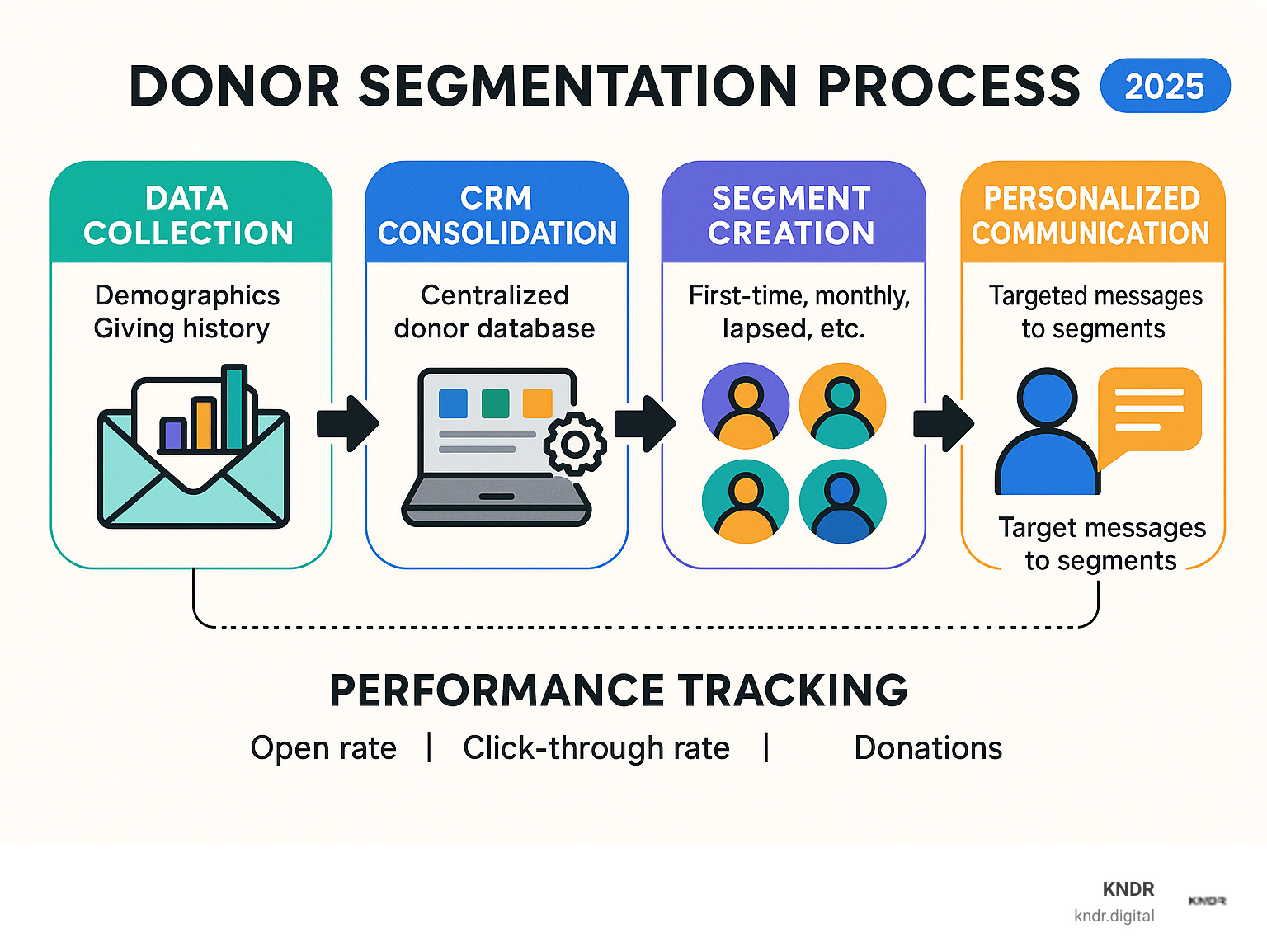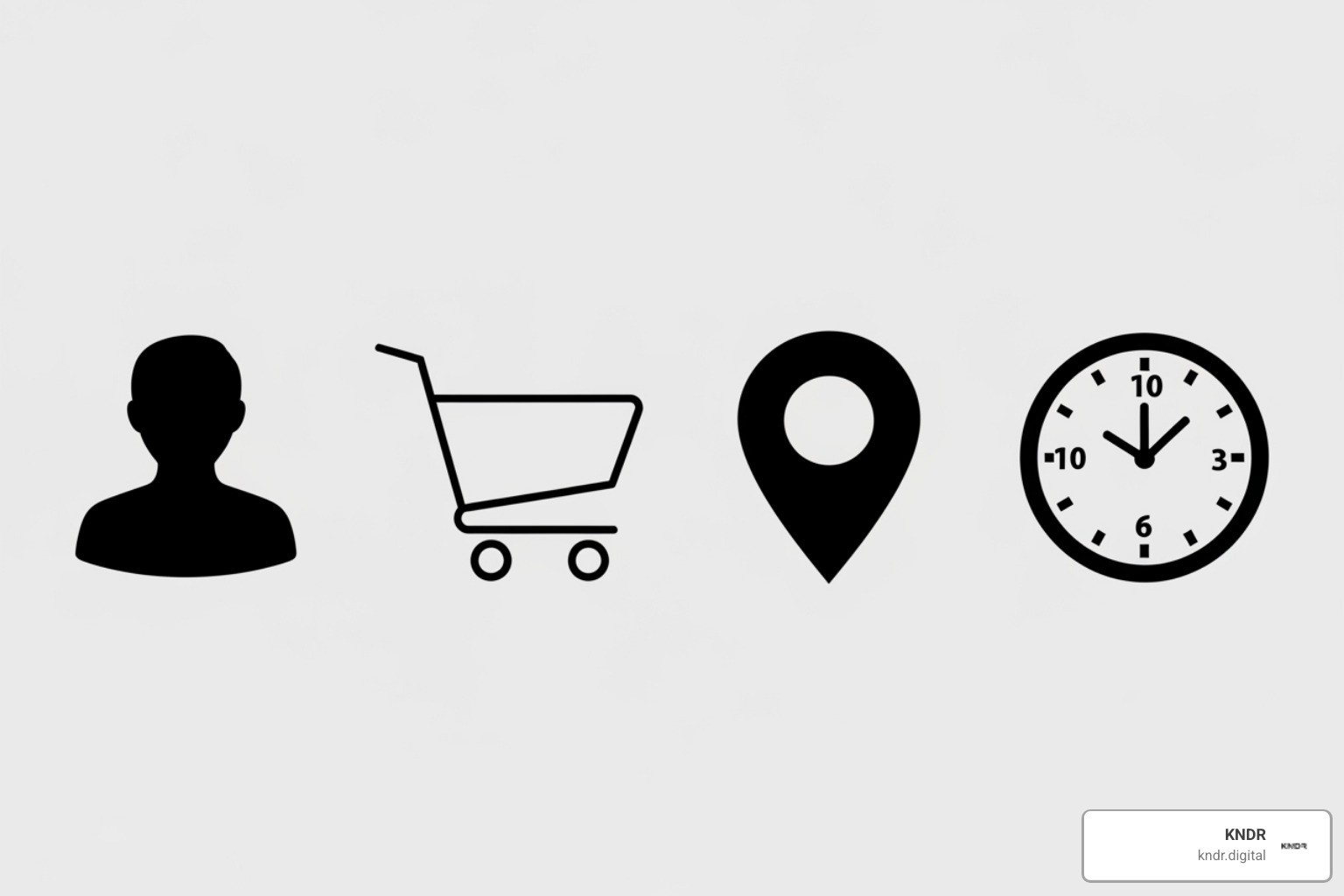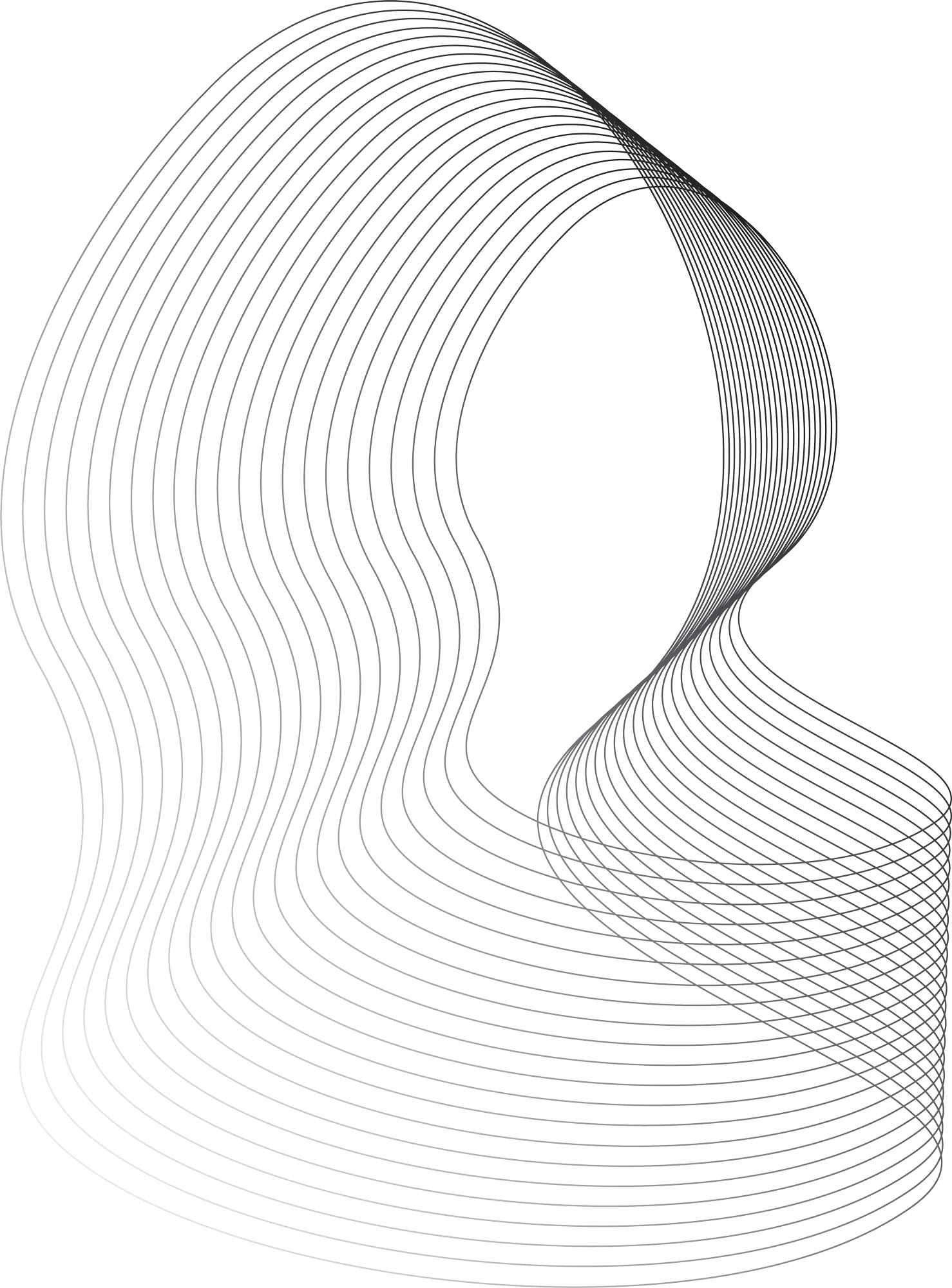The Ultimate Guide to Donor Segmentation Best Practices

Why Donor Segmentation Best Practices Are Essential for Your Nonprofit's Success
Donor segmentation best practices are key to shifting your fundraising from a one-size-fits-all approach to personalized outreach that builds lasting relationships and drives sustainable growth.
Top Donor Segmentation Best Practices:
- Start with clean, centralized data - Use a nonprofit CRM to consolidate donor information.
- Begin with basic segments - Group first-time, monthly, lapsed, and major donors.
- Personalize communications - Tailor messages to each segment's interests and giving history.
- Use multiple data points - Combine demographics, behavior, and engagement data.
- Regularly update segments - Review and refresh segments quarterly or before major campaigns.
- Track performance metrics - Monitor open rates, click-throughs, and donation responses by segment.
- Leverage automation - Use tools to automatically assign donors to appropriate segments.
The statistics are clear: the average new donor retention rate is only 20%, while repeat donors have retention rates closer to 60%. It's also 10 times more expensive to attract new supporters than to retain existing ones. This means your nonprofit can't afford to treat all donors the same.
Proper segmentation creates pathways to deeper relationships. Monthly donors have retention rates near 90%, and volunteers are 11 times more likely to donate. These aren't just numbers; they're opportunities open uped through strategic segmentation.
As Mahir Iskender, CEO of KNDR.digital, I've seen how AI-powered donor segmentation best practices can turn stagnant databases into thriving communities. The right strategy is the difference between struggling to meet fundraising goals and consistently exceeding them.

Donor segmentation best practices terms to remember:
What is Donor Segmentation and Why is it a Game-Changer for Nonprofits?
Donor segmentation is the process of organizing supporters into smaller groups based on shared characteristics like age, giving history, or volunteer activity. Instead of sending one generic message to everyone, you can craft communications that speak directly to each group's interests and motivations.
A 25-year-old who gave $25 via Instagram has different needs than a 65-year-old who has given $500 annually for a decade. Treating them the same is ineffective. When you implement donor segmentation best practices, supporters feel seen and valued. This deeper connection leads to stronger loyalty, better retention, and more successful fundraising. It's the foundation of Data-Driven Fundraising and transforms your approach to Donor Relationship Management.
The High Cost of Poor Retention
A sobering reality for nonprofits is that the average new donor retention rate is only around 20%. This means for every five new supporters you attract, four will likely never give again. In contrast, repeat donors have retention rates closer to 60%.
The financial implications are staggering: it costs roughly 10 times more to acquire a new donor than to retain an existing one. Without a retention strategy, you're spending precious resources to attract supporters who quickly disappear. Furthermore, lapsed donors have less than a 4% chance of returning to active giving. This is why donor segmentation best practices are essential for survival. Identifying at-risk donors with personalized outreach can dramatically improve these numbers.
The Power of Personalization
When you move beyond a one-size-fits-all approach, you build genuine connections. Imagine sending a welcome message to a first-time donor that acknowledges their specific gift and explains its impact. This personalized messaging makes donors feel valued, not like just another name on a mailing list.
Independent research shows that communications are most impactful when they're customized to supporters' interests and giving history. It's about showing donors you see them as individuals. This approach creates a positive cycle: better communication leads to stronger relationships, higher retention, and more sustainable fundraising. It's the foundation of effective donor management that works in the real world.
The Building Blocks: Key Data & Characteristics for Effective Segmentation
To master donor segmentation best practices, you must understand the data that reveals who your donors are and what drives them. Every piece of data tells part of a larger story, and organizing it transforms raw numbers into meaningful relationships. Donor data is crucial for understanding interests and behavior, allowing for targeted, effective outreach.

Demographic and Geographic Data
These basics provide the "who" and "where" for your segmentation strategy.
- Age and Gender: Offer insights into generational preferences. For example, according to recent research from the Pew Research Center, more than 70% of adults under 30 use Instagram, while usage drops sharply among older age groups. You might reach younger supporters on social media and older generations through direct mail.
- Location: Allows for community-specific stories and event invitations, which is powerful for Digital Donor Acquisition.
- Income and Family Status: Help understand giving capacity and life circumstances that influence donation patterns.
Behavioral and Giving History Data
These actions reveal true engagement and commitment.
- Donation Amount, Frequency, and Recency (RFM): This trinity is the backbone of segmentation, indicating how fresh the relationship is, their commitment level, and their giving capacity.
- Event Attendance: Shows how different segments prefer to connect with your mission, whether at galas, small gatherings, or virtual events.
- Volunteer History: A key indicator of commitment. Volunteers are around 11 times more likely to donate than the average person, making them a prime segment for financial appeals. This is crucial for developing Digital Fundraising Strategies.
- Communication Channel Preference: Respecting whether a donor prefers email, direct mail, or social media is both polite and strategic.
Psychographic and Engagement Data
This data explores the "why" behind giving.
- Motivations, Interests, and Values: Understanding what aspects of your mission resonate most allows you to craft messages that connect on an emotional level.
- Social Media Engagement: Provides real-time insights into donor interests and identifies potential advocates for your Charity Digital Marketing efforts.
- Website Behavior: Tracking content downloads or time spent on impact pages reveals a donor's level of interest. Tools like Google Analytics can help you see what content excites different segments.
The magic happens when you combine these data types. A young, local, monthly donor who volunteers tells a different story than an older, long-distance major donor. Both are valuable, but they require different approaches to feel connected.
Your Step-by-Step Guide to Implementing a Donor Segmentation Strategy
Implementing donor segmentation best practices is a systematic process that can transform your outreach. This approach is a cornerstone of successful Fundraising for Nonprofits.
Step 1: Consolidate and Clean Your Data in a Nonprofit CRM
A solid data foundation is non-negotiable. Your nonprofit CRM is the heart of your operation, and without clean, organized data, your segmentation strategy will fail.
- Centralize Data: Ensure every donor interaction, donation, and preference lives in one place, eliminating scattered spreadsheets.
- Practice Data Hygiene: Implement standardized data entry procedures and perform regular deduplication to maintain a reliable database. Strong data management procedures are critical for long-term success.
- Invest in Software: Proper Donor Management Software with features like automatic deduplication and custom fields is a worthwhile investment.
Step 2: Identify and Create Your Core Donor Segments
Start with a few well-defined segments and build complexity over time. Key segments include:
- First-Time Donors: They have low retention rates but the highest potential for improvement. Give them a warm welcome and a clear path to a second gift.
- Monthly Donors: With 80-90% retention, these supporters provide steady, reliable income and deserve special recognition.
- Lapsed Donors (LYBUNT/SYBUNT): These donors represent untapped potential. A thoughtful "we miss you" campaign can rekindle their support.
- Major Donors: These high-impact supporters require personalized cultivation and stewardship.
- Other Key Groups: Don't forget volunteers, event attendees, and social media followers, who have all demonstrated active interest in your cause.
Step 3: Develop Custom Communication and Fundraising Strategies
Tailor your communication to each segment.
- Personalize Asks: Reflect the donor's giving capacity and relationship with your organization.
- Use Specific Channels: Respect donor preferences for email, direct mail, or social media. A multi-channel approach is key for Digital Fundraising Best Practices.
- Customize Messaging: The tone and content should match the segment. A volunteer might get updates on hands-on impact, while a corporate donor receives reports on community outcomes. AI-Driven Email Campaigns can streamline this personalization.
Step 4: Leverage the Right Tools and Technology
Use technology to automate tasks and provide personalized attention at scale.
- CRM Functionality: Your system must easily create and manage segments, run reports, and track interactions.
- Automation: Use tools to send triggered, personalized messages like thank you notes and targeted appeals.
- Reporting and Analytics: Track what's working for each segment to continuously refine your strategy.
At KNDR, our donor management and analytics solutions are designed to make these steps seamless, allowing you to focus on advancing your mission.
Advanced Donor Segmentation Best Practices
Moving beyond foundational methods open ups greater potential. Advanced segmentation is a core part of a sophisticated Digital Marketing Strategy for Fundraising.
The RFM Model: A Powerful, Yet Limited, Starting Point
The RFM model scores donors on Recency (how recently they gave), Frequency (how often they give), and Monetary value (how much they give). The RFM segmentation model scores donors to help identify your most valuable supporters. While simple and effective, RFM is reactive—it looks at past behavior. It can also miss the potential of non-financial supporters like dedicated volunteers or new donors with high future value.
The Future is Predictive: AI-Powered Donor Segmentation Best Practices
Modern donor segmentation best practices use AI and machine learning for predictive modeling. Instead of just looking at past actions, we can now predict what donors are likely to do next.
AI-powered segmentation can:
- Identify at-risk donors before they lapse, allowing for proactive re-engagement.
- Use propensity scoring to predict a donor's likelihood to give to a specific campaign, helping you optimize ask amounts.
- Uncover hidden major donor potential by spotting patterns that human analysis might miss.
These systems analyze hundreds of data points—from giving history to website behavior—to provide actionable insights. For more, see The Complete Guide to AI-Powered Donor Segmentation and the Best AI Tools for Nonprofits.
Maintaining and Adapting Your Strategy: A Key Donor Segmentation Best Practice
The most important practice is ongoing maintenance. Your segmentation strategy must be a living system.
- Regular Reviews: Examine segments quarterly and before major campaigns to ensure they align with your goals.
- Adapt to Goals: Your focus may shift from first-time donor retention to major gift cultivation. Your segments should adapt accordingly.
- Track Metrics: Monitor how each segment responds to different campaigns to refine your strategy.
- Update Data: A successful fundraising strategy requires updated records. Keep donor information current as their lives change.
Advanced segmentation isn't about complication; it's about making your outreach more effective and building stronger relationships.
Frequently Asked Questions about Donor Segmentation
Here are answers to common questions about implementing donor segmentation best practices.
How often should we update our donor segments?
Find a rhythm that keeps data fresh without creating extra work. A good approach includes:
- Trigger-based updates: Use automation to move donors between segments based on actions (e.g., a first-time donor becomes a repeat donor after their second gift).
- Pre-campaign reviews: Always review segments before a major campaign to ensure your messaging is targeted.
- Annual review: Conduct a comprehensive review of your entire strategy once a year to align with your evolving goals.
What's the most important donor segment for a nonprofit to start with?
The "most important" segment depends on your goals. However, good starting points are:
- First-time donors: They have low retention rates (around 20%), offering the most room for improvement. A great welcome experience can significantly boost retention.
- Lapsed donors: While hard to win back, these individuals have supported you before. A targeted "we miss you" campaign can be effective.
- Monthly donors: With high retention (80-90%), they are the backbone of sustainable fundraising and deserve special attention.
Start with one or two segments that you can easily define and that align with your immediate priorities.
Can small nonprofits with limited data still use donor segmentation?
Absolutely. You don't need sophisticated tools to start.
- Start simple: Begin with basic categories like "First-Time Donors," "Repeat Donors," and "Major Donors." This is far more effective than a one-size-fits-all approach.
- Use basic data: Even with just names, addresses, and donation history, you can implement a simple RFM model.
- Manual segmentation is okay: If you don't have a CRM, use spreadsheets. It's more work, but the results are worth it.
Donor segmentation best practices scale with your organization. The key is to start somewhere and build from there.
Conclusion: Lift Your Fundraising with Smarter Segmentation
Donor segmentation best practices are the foundation of building genuine, lasting relationships with supporters. By understanding what makes each donor unique, you can transform generic outreach into meaningful conversations that drive results. Treating donors as individuals increases retention, boosts donations, and provides the sustainable support your mission deserves.
The journey begins with clean, centralized data in a well-managed CRM. This foundation allows you to build custom communication strategies that speak to each segment's heart. While traditional methods like RFM are a good start, the real game-changer is AI-powered predictive analytics. These tools help you anticipate donor behavior, allowing for a proactive fundraising approach.
The future of segmentation is intelligent technology that amplifies the human touch, which is central to Boosting Nonprofit Donations. By automating data analysis, you can focus on building relationships and advancing your mission.
At KNDR, we help nonprofits harness this potential. With the right donor segmentation best practices and AI-driven insights, your organization can create deeper connections and achieve a greater impact. The question isn't whether you can afford to implement smart segmentation—it's whether you can afford not to.
Ready to see what's possible when data meets heart? Learn how KNDR can transform your fundraising strategy with our AI-driven approach that puts relationships first.




